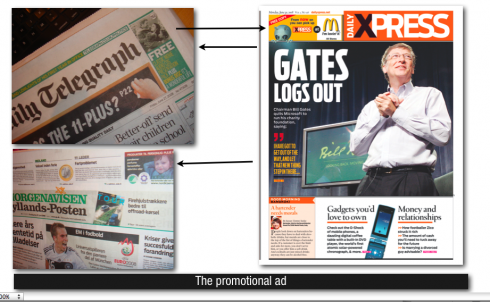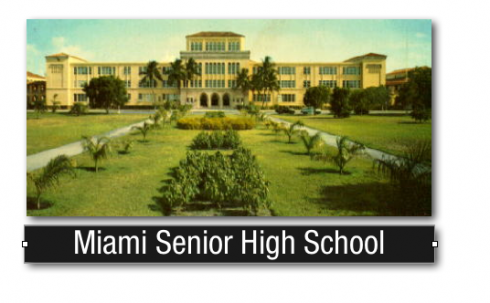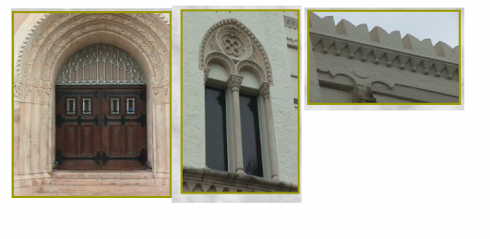

The U.S. dailies are less likely to experiment with advertising configuration and strategies than their counterparts worldwide.
True, we now have adopted the “page one ad” in dailies across the nation, including The Wall Street Journal and USA Today, which do so routinely, without detracting from the overall look of their front pages. However, these same dailies are slower to adopt other types of advertising strategies that will discuss here:
The Promotional Ad
The Silent Ad
The Island Ad
Odd configurations
The Wrap Around Ad
TODAY: The Promotion Ad Campaign
European and Asian newspapers conduct almost daily promotion of products and services, starting on page one. We see examples here from The Telegraph, of London, as well as Daily Xpress, of Bangkok, where one of the “promo” navigational units on page one is devoted to sponsorship ads.
In the case of the Daily Xpress, the agreement is that the newspaper runs the Macdonald’s ad in the teaser slot for around a month.
Leroy Sylk, art director of the Xpress, writes that this type of
ad helps both Xpress and Macdonald’s by working in three ways:
1. it informs Xpress readers that at any time they can pick up Xpress for free at any of Macdonald’s Bangkok outlets in case they can’t get a copy at their regular/usual point
2. Daily Xpress gets more visibility/exposure to more readers by being displayed at Macdonald’s outlets.
3. It helps the advertiser itself get more publicity.
TOMORROW: Silent ads: what we can learn from online advertising strategies.


WHERE IS MARIO? Working in Miami and visiting my mother here in the city where I grew up after arriving from Cuba in 1962 and the one I will always call home. Driving east on Flagler Street, I am forever mesmerized by the beauty of the building that houses my alma mater, Miami Senior High School (Class of 1965). Considered an architectural treasure, MHS was added to the National Register of Historic Sites in 1990. The windows and doors of the Miami High’s building have always captured the attention of photographers and architects. The style has been described as French Romanesque, or resembling a church from the Normandy region. However, experts identify MHS’s architecture as Spanish Colonial or Mediterranean.
Go here.
However, it is our personal experiences inside a building that transcend the structure itself. For me, Miami High represents my first smell, taste and feel for my adopted country, the United States; it was here that I savored that giant victory that was reading my first book cover to cover in English (“You Can’t Go Home Again,” by Thomas Wolfe), or discovering the beauty of my new language with the help of my English teacher, Miss Angela Congelo, who took the time, after school, to help me understand and to enjoy the poetry of Emily Dickinson, an enjoyment that is still with me 45 years later. Not to mention that my first journalistic scribbling, in halted English, took place at the school newspaper, Miami High Times.
With the help of the late Miss Congelo I memorized many lines from Dickinson’s poems, as part of learning English. One that I remember often is: “This is my letter to the World that never wrote to me”. If Dickinson had lived in this age of blogging, I am sure the world would have written to her.
By the way, Mr. Wolfe, you CAN go home again—-to relive the memories.
I just did.